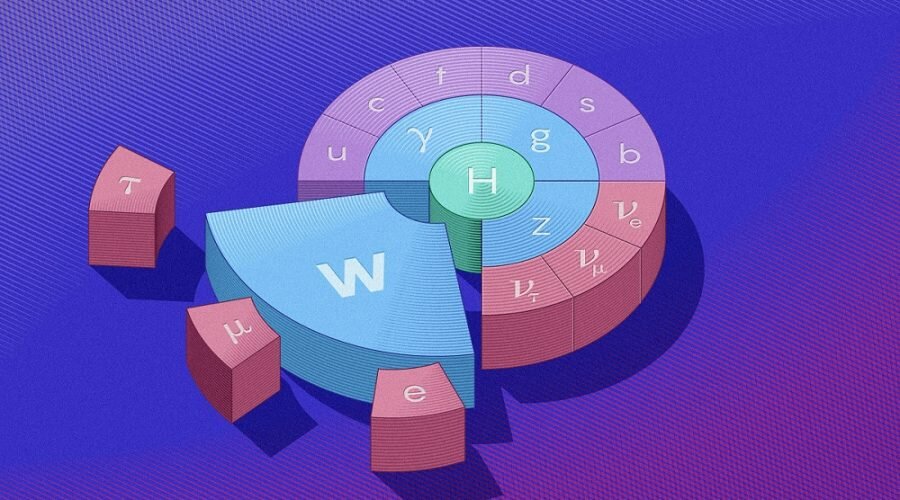After a decade of meticulous measurements, scientists announced Thursday that a fundamental particle – the W boson – has a significantly greater mass than theorized, shaking the foundations of our understanding of how the Universe works.
Those foundations are grounded by the Standard Model of particle physics, which is the best theory scientists have to describe the most basic building blocks of the Universe, and what forces govern them.
The W boson governs what is called the weak force, one of the four fundamental forces of nature, and therefore a pillar of the Standard Model.
The measurement, published in the journal Science, comes from a vintage particle collider at the Fermi National Accelerator Laboratory in Batavia, Illinois, that smashed its final protons a decade ago. The roughly 400 members of the Collider Detector at Fermilab (CDF) collaboration have continued to analyze W bosons produced by the collider, called the Tevatron, chasing down myriad sources of error to reach an unparalleled level of precision.
If the W’s excess heft relative to the standard theoretical prediction can be independently confirmed, the finding would imply the existence of undiscovered particles or forces and would bring about the first major rewriting of the laws of quantum physics in half a century.
‘Fissures’ in the model
Harry Cliff, a particle physicist at Cambridge University who works at the Large Hadron Collider, said the Standard Model is “probably the most successful scientific theory that has ever been written down”.
“It can make fantastically precise predictions,” he said. But if those predictions are proved wrong, the model cannot merely be tweaked.
“It’s like a house of cards, you pull on one bit of it too much, the whole thing comes crashing down,” Cliff told AFP.
The Standard Model is not without its problems.
For example, it doesn’t account for dark matter, which along with dark energy is thought to make up 95 percent of the Universe. It also says that the Universe should not have existed in the first place, because the Big Bang ought to have annihilated itself.
On top of that, “a few fissures have recently been exposed” in the model, physicists said in a companion Science article.
“In this framework of clues that there are missing pieces to the Standard Model, we have contributed one more, very interesting, and somewhat large clue,” Kotwal said.
Jan Stark, physicist and director of research at the French CNRS institute, said “this is either a major discovery or a problem in the analysis of data,” predicting “quite heated discussions in the years to come”.
He told AFP that “extraordinary claims require extraordinary evidence”.
‘Huge deal’
The CDF scientists said they had determined the W boson’s mass with a precision of 0.01 percent – twice as precise as previous efforts.
They compared it to measuring the weight of a 350-kilogram (800-pound) gorilla to within 40 grams (1.5 ounces).
They found the boson was different than the Standard Model’s prediction by seven standard deviations, which are also called sigma.
Cliff said that if you were flipping a coin, “the chances of getting a five sigma result by dumb luck is one in three and a half million”.
“If this is real, and not some systematic bias or misunderstanding of how to do the calculations, then it’s a huge deal because it would mean there’s a new fundamental ingredient to our universe that we haven’t discovered before,” he said.
“But if you’re going to say something as big as we’ve broken the Standard Model of particle physics, and there’s new particles out there to discover, to convince people of that you probably need more than one measurement from more than one experiment.”
CDF co-spokesperson David Toback said that “it’s now up to the theoretical physics community and other experiments to follow up on this and shed light on this mystery”.
And after a decade of measurements, Kotwal isn’t done yet.
“We follow the clues and leave no stone unturned, so we’ll figure out what this means.”
Source:
SCIENCE • 7 Apr 2022 • Vol 376, Issue 6589 • pp. 170-176 • DOI: 10.1126/science.abk1781 (High-precision measurement of the W boson mass with the CDF II detector)

